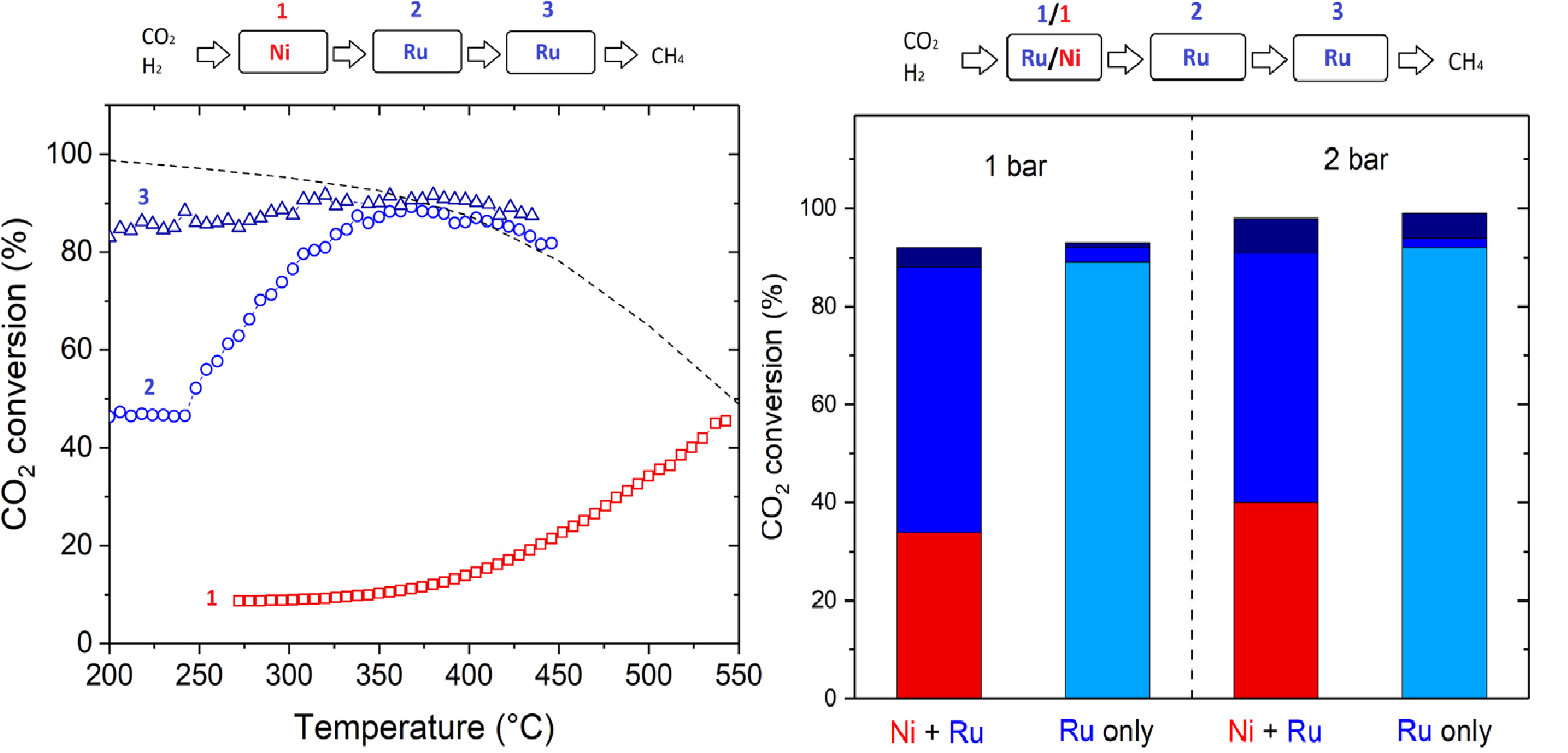Enhancement of power-to-gas via multi-catalyst reactors tailoring reaction rate and heat exchange
The methanation reactor, key of Power-to-Gas (PtG) systems, is a catalytic reactor with different requirements according to the advancement of the reaction. In fact, the reaction rate can be limited by thermodynamics or kinetics depending to temperature and conversion. With an appropriate model-based optimization routine[1], it is possible to determine the requirements of the system in term of heat transfer properties to minimize the residence time needed to reach the target CO2 conversion (99.5% due to grid injection regulations). We reported that three different cooling zones are sufficient to optimize the reactor: first an adiabatic section, followed by a zone with large cooling and a final section with low heat transfer [1]. According to these findings, we targeted the coupling of PtG with a natural gas expansion station, where low temperature heat is required to keep the gas temperature constant during expansion from 60 to 5 bar. This specific reactor is an important breaktrough for PtG, as it allows the direct valorization of process waste heat, improving the economic performance of the system. The manufactured reactor operates with Ru/Al2O3 as catalyst and includes three different cooling areas: an adiabatic preheater, a cooled section operated with the cooling water from the gas expansion station and a final area with low heat exchange properties. The reactor was operated in field and the gas quality and temperature profile were recorded. According to the experimental results of the tests, the concept is further refined by changing the catalyst in the three zones, operating the first two with Ni/Al2O3 and only the last section with Ru/Al2O3. Consequently, a new system tailoring the catalyst properties is designed and operated [2,3]. First, the reaction is activated over the Ni-based catalyst, therefore reducing the amount of noble metal required for the operation. This change changes the concentration profiles in the system, but not the final conversion. As shown in figure 1a, initially Ni can be used for the adiabatic part of the reactor, reaching a hotspot of 550 ˚C. Afterwards the reaction can be continued quickly cooling the reactor to lower temperature over Ru. In this part of the reactor, the cooling is adapted to ensure the maximum reaction rate and reach high conversion. Figure 1b shows the comparison between the Ru-based and the hybrid (Ru+Ni) reactor. The total CO2 conversion is the same in the two cases, confirming that an important part of the reactor can operate over Ni, without losses in productivity.

[1] E. Moioli, N. Gallandat, A. Züttel, Chem. Eng. J. 2019, 375, 121954.
[2] E. Moioli, A. Züttel, Sustain. Energy Fuels 2020, 4, 1396–1408.
[3] E. Moioli, R. Mutschler, A. Borsay, M. Calizzi, A. Züttel, Chem. Eng. Sci. X 2020, 8, 100078.